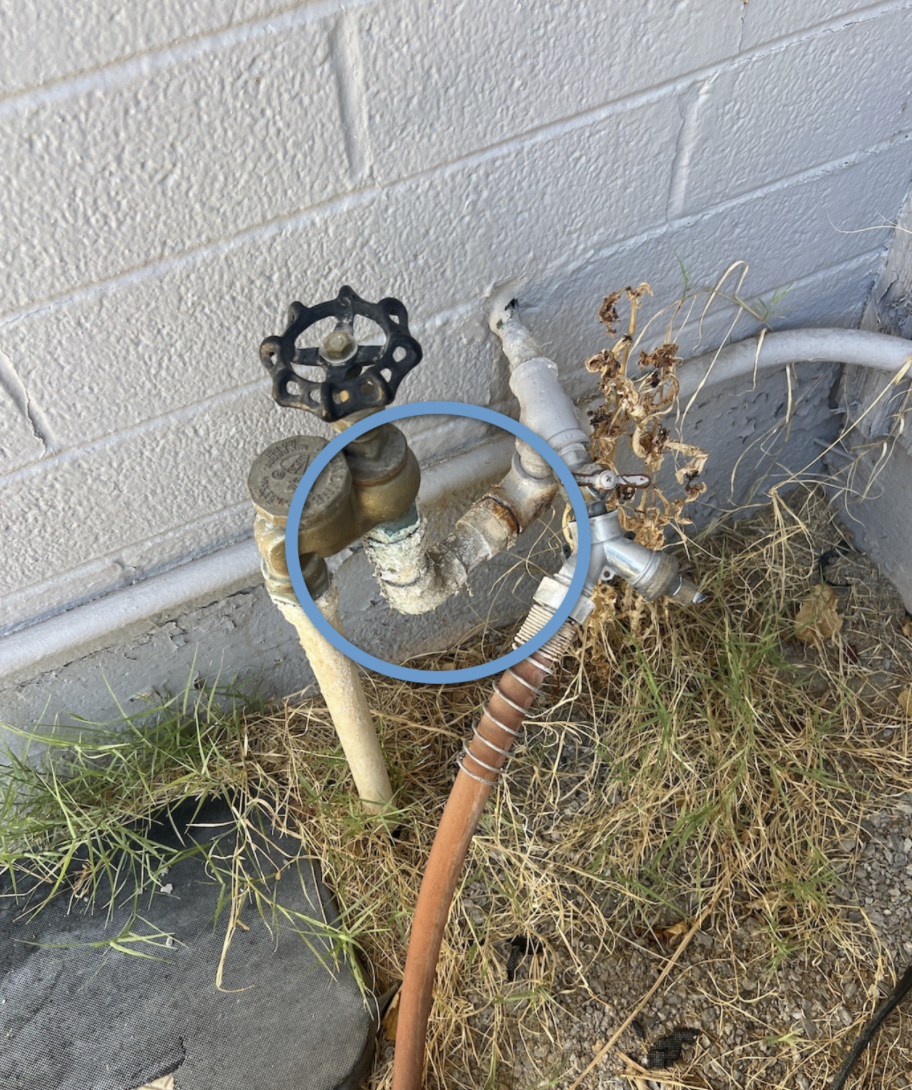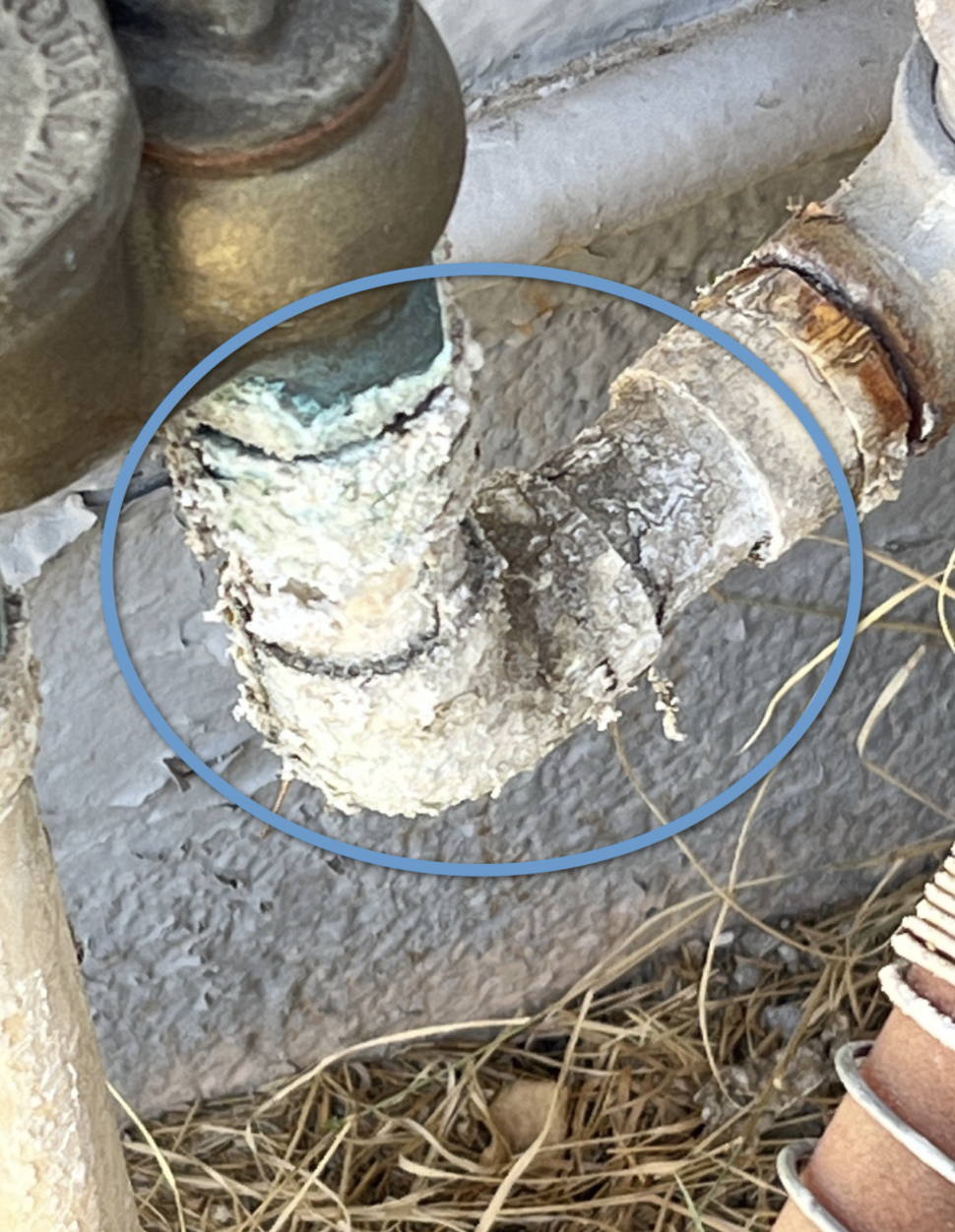The Importance of Addressing a Damaged Irrigation Shut-Off Valve
An irrigation shut-off valve is a crucial component of your home’s irrigation system. It controls the flow of water to your irrigation lines, allowing you to stop or start water flow as needed. Proper functioning of this valve is vital for maintaining an effective and safe irrigation system. If you’ve noticed a damaged irrigation shut-off valve, it’s essential to address this issue promptly. A malfunctioning shut-off valve can lead to serious risks, including leaks and potential contamination of your home’s water supply. Here’s what you need to know about the implications and necessary actions regarding a damaged irrigation shut-off.
Damaged irrigation shut-off valve found during a home inspection in Las Vegas
Damaged Shut-Off Valve
This poses an increased risk of leaking and contaminated water backflowing in the home.
Risks Associated with a Damaged Shut-Off Valve
1) Increased Risk of Leaks: A damaged shut-off valve can lead to uncontrolled water flow, resulting in leaks. This can cause water damage to your landscaping, foundation, and even your home’s interior.
2) Contamination of Water Supply: If the valve fails, there’s a risk of backflow, where contaminated water from your irrigation system can siphon back into your home’s potable water supply. This poses serious health risks, as it can introduce harmful chemicals, fertilizers, or pathogens.
3) Higher Water Bills: Leaks from a malfunctioning valve can lead to increased water usage, resulting in higher utility bills.
4) Damage to Irrigation System: A faulty valve can affect the overall efficiency of your irrigation system, leading to uneven watering, plant stress, and potential damage to irrigation components.
What to Do If You Have a Damaged Shut-Off Valve
1) Inspect the Valve: Check the shut-off valve for any visible signs of damage, such as cracks, corrosion, or leakage. If you notice any issues, take immediate action.
2) Turn Off Water Supply: If the valve is leaking or damaged, turn off the water supply to prevent further water loss or contamination.
3) Replace or Repair the Valve: Depending on the extent of the damage, you may need to repair or replace the valve. For minor issues, tightening connections or replacing seals may suffice. For significant damage, consider installing a new shut-off valve.
4) Consult a Professional: If you’re unsure about the extent of the damage or how to proceed, it’s wise to consult a licensed plumber or irrigation specialist. They can assess the situation and provide the best course of action.
5) Implement Backflow Prevention: To further protect your home’s water supply, consider installing a backflow prevention device. This device ensures that water can only flow in one direction, preventing contaminants from entering your potable water system.
6) Regular Maintenance: Schedule regular inspections of your irrigation system, including the shut-off valve. Routine maintenance can help identify issues early and prevent more significant problems down the line.
Conclusion
A damaged irrigation shut-off valve poses serious risks, including water leaks and contamination of your home’s water supply. Addressing this issue promptly by inspecting, repairing, or replacing the valve is essential to ensure the safety and efficiency of your irrigation system. Regular maintenance and consideration of backflow prevention measures will further protect your home and landscape for years to come.


